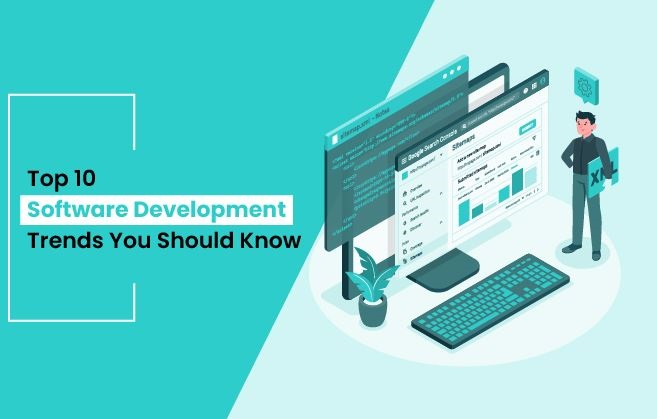Top 10 Software Trends in the U.S. for 2025
The software industry in the United States continues to evolve at an unprecedented pace, driving innovation across multiple sectors and reshaping how businesses and consumers interact with technology. As we enter 2025, understanding the latest software trends is crucial for businesses, developers, investors, and tech enthusiasts looking to stay ahead of the curve. This comprehensive guide explores the top 10 software trends in the U.S. for 2025, highlighting key innovations, market growth opportunities, and the future outlook of this dynamic industry.
1. Artificial Intelligence (AI) and Machine Learning (ML) Integration
AI and ML remain at the forefront of software innovation. In 2025, the U.S. market sees deeper AI integration across software applications, from predictive analytics and natural language processing to autonomous systems.
- AI-powered automation is optimizing workflows, reducing costs, and enhancing decision-making.
- Generative AI, including tools like GPT models, is revolutionizing content creation, coding, and customer service.
- Adoption in healthcare, finance, and retail software solutions is accelerating.
2. Cloud-Native Software and Edge Computing
The shift towards cloud-native architectures continues to dominate software development.
- Organizations are increasingly adopting microservices, containerization, and serverless computing to build scalable and resilient applications.
- Edge computing complements cloud strategies by processing data closer to the source, reducing latency for IoT devices and real-time analytics.
- Leading U.S. tech companies are investing heavily in hybrid cloud solutions that balance cloud and edge capabilities.
3. Cybersecurity Software Evolution
With rising cyber threats, demand for advanced cybersecurity software skyrockets.
- AI-driven threat detection and response tools become standard.
- Zero Trust Architecture gains traction, enforcing strict access controls and continuous verification.
- Software focusing on ransomware protection, identity management, and data privacy compliance (such as CCPA and HIPAA) are crucial in U.S. markets.
4. Low-Code and No-Code Development Platforms
To accelerate software delivery and empower non-technical users, low-code/no-code platforms expand rapidly.
- Businesses in the U.S. leverage these platforms to reduce development time and costs.
- Citizen developers contribute to app creation, fostering innovation at all levels.
- Integration with AI enhances platform capabilities for automated workflows and decision-making.
5. Software for Remote Work and Collaboration
The remote work trend solidified by the pandemic continues reshaping software needs.
- Collaboration platforms evolve with advanced video conferencing, virtual whiteboards, and AI-powered productivity tools.
- Cloud-based project management and communication apps dominate the market.
- Enhanced security and compliance features cater to remote workforce challenges.
6. Augmented Reality (AR) and Virtual Reality (VR) Software
AR and VR software is transitioning from niche entertainment to mainstream business applications.
- Training simulations, virtual meetings, and immersive marketing experiences gain adoption.
- The U.S. software market sees growth in AR/VR development kits and platforms.
- Integration with AI and 5G networks boosts performance and usability.
7. Blockchain and Decentralized Applications (dApps)
Blockchain technology is maturing beyond cryptocurrencies.
- Software leveraging blockchain for supply chain transparency, secure digital identities, and decentralized finance (DeFi) grows.
- Enterprises in the U.S. explore blockchain for contract automation and fraud prevention.
- Regulatory clarity in 2025 helps foster wider adoption.
8. SaaS Market Expansion
Software as a Service (SaaS) remains the dominant delivery model.
- Subscription-based models expand into new industries including healthcare, education, and government.
- Vertical SaaS solutions tailored to specific sectors gain momentum.
- Integration of AI and analytics enhances SaaS product offerings.
9. Quantum Computing Software Development
While still in early stages, quantum computing software garners increasing attention.
- U.S. companies invest in developing quantum algorithms and software development kits (SDKs).
- Potential applications include cryptography, optimization problems, and drug discovery.
- Collaboration between academia, startups, and tech giants accelerates progress.
10. Environmental and Sustainability Software
Software solutions addressing environmental impact and sustainability rise sharply.
- Tools for carbon footprint tracking, energy management, and sustainable supply chains become standard.
- Compliance software aids businesses in meeting federal and state environmental regulations.
- The U.S. market sees growth in green tech software as corporations prioritize ESG goals.
Market Growth and Economic Impact
The U.S. software industry is projected to surpass $600 billion in revenue by 2025, driven by:
- Increased digital transformation efforts across sectors.
- Growing demand for automation and AI capabilities.
- Expansion of cloud infrastructure and related services.
Employment in software development and IT sectors is expected to rise, reflecting the industry’s central role in the U.S. economy.
Future Outlook: What to Expect Beyond 2025
- Continued AI democratization will make advanced software accessible to smaller businesses.
- Interoperability standards will improve integration across diverse platforms and devices.
- Ethical AI and data privacy concerns will shape software design and regulatory frameworks.
- More personalized and adaptive software experiences will emerge, powered by AI and data analytics.
Investors and innovators should focus on emerging niches like quantum software, decentralized applications, and sustainability tools for long-term growth.
Conclusion
The U.S. software landscape in 2025 is defined by rapid innovation, market expansion, and evolving user demands. From AI and cloud-native technologies to cybersecurity and sustainability, these top 10 trends highlight the areas driving the industry forward. Staying informed and agile is critical for businesses, developers, and stakeholders aiming to capitalize on the opportunities and challenges presented by these transformative software trends.
Keywords: U.S. software trends 2025, software innovations USA, cloud-native software, AI software 2025, cybersecurity software USA, SaaS market growth, blockchain applications USA, quantum computing software, AR VR software, sustainability software trends





















